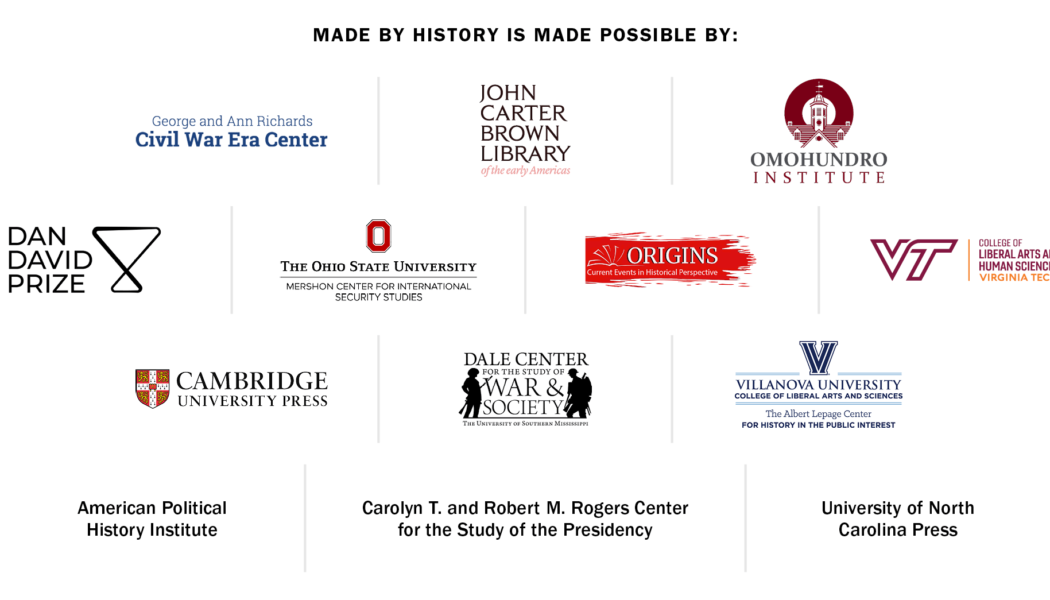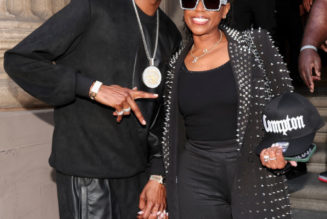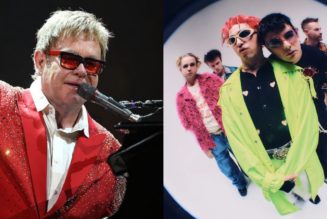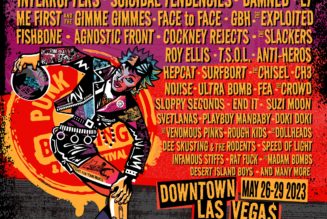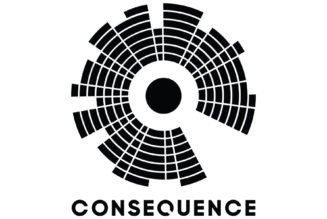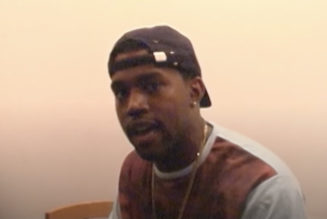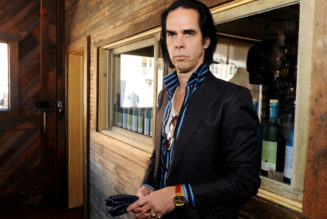CMA Fest, the Country Music Association’s (CMA) lucrative annual takeover of downtown Nashville — which produced $75 million in revenue in 2023 — kicks off on Thursday with special events including a live interview with Dolly Parton followed by a program billed as “Enlisted: Where Music Meets Military with Craig Morgan and Gary Sinise.” Morgan, a country singer and U.S. Army veteran, has long made his service a prominent aspect of his public personae, while Sinise has built a reputation in acting and music as a vocal supporter of U.S. troops.
This combination of musical profits and military promotion is nothing new for the CMA. In fact, it has driven the organization’s business and political aspirations since its founding in 1958. Established as a “chamber of commerce” for country music, the CMA sought to boost the genre’s commercial and political power in the U.S. and around the world, adopting the founding slogan “Best Liked World-Wide.” The organization used its connections to politicians and the U.S. Defense Department to turn that slogan into reality. Together, these forces promoted country music as “America’s music” and cemented a relationship between the genre and the U.S. Armed Forces that continues to shape the country industry’s politics in 2024.
The effort to rebrand country music and tie it to the U.S.’s Cold War mission began in the early 1950s. In 1951, country music impresario Connie B. Gay booked artist Grandpa Jones on a tour of Japan and South Korea, where he played for an estimated 38,000 U.S. and U.N. troops. Gay, who owned multiple radio and television stations around Washington, D.C., also joined with the U.S. Army and Air Force Recruiting Service to create country music-themed recruitment radio shows.
The Army found a spokesperson for those efforts in Faron Young, an up-and-coming country artist who was drafted in 1952 just before his break-out single hit the Billboard charts. Taking advantage of this new star in olive drab, Young’s commanding officers excused him from basic training and sent him on the road as the voice of recruitment and entertainment for the Third U.S. Army until he received his discharge in 1954. Country music recruitment campaigns proliferated throughout the late 1950s and early 1960s, eventually accounting for more than one-third of all musical recruitment on television.
In the mid-1950s, the push from the country industry received a boost from Tennessee’s moderate Democratic Governor Frank G. Clement. At the time, Nashville was gaining prominence as the Music City thanks to its combination of studios, song publishers, and the Grand Ole Opry. Recognizing the commercial impact of country music on his state, Clement launched a public relations campaign to shake off the genre’s previous reputation as hillbilly music and pitch it as a respectable style for modern mid-century consumers. By making the genre seem quintessentially American, he hoped to maximize that sales potential.
In 1956, Clement told a luncheon of the Radio and Television Executives Society that “today’s country music has captured and held the melodies our forefathers sang as they trudged through the tall rhododendron-covered Smokies . . . This was the music of the pioneers.” Clement closed his address to the industry leaders with a conflation of personal taste, country music, and American identity, claiming, “I love country music because when I hear it, I hear America singing.”
The next year, Clement used a televised broadcast of the Grand Ole Opry to promote the idea that country music epitomized patriotism and Americanism. The genre was “just plain good for the people of Tennessee, the nation and the world.” The governor recalled how during World War II and the Korean War, the Opry’s stars had visited the troops, “to bring the message from home — in words and music — to the front lines where America’s homes were being defended.”
But the country music industry and its backers weren’t just boosting military recruiting efforts and visiting the troops as a public service. The business benefited from its ties to the military and the patriotic image it was creating in multiple ways. As the Cold War military grew in size and scope, the country music industry latched onto this well-funded and ever-growing arm of the U.S. government while also cultivating a record-buying audience among U.S. servicemembers.
Nashville’s music leaders first realized the potential for this strategy when recruitment shows delivered hundreds of thousands of dollars to studios and producers on Music Row. Additionally, the CMA cultivated relationships with disc jockeys on the Armed Forces Radio and Television Service, who played more Nashville artists and positioned country music as patriotic. In 1965, Billboard reported that the U.S. Armed Forces had begun a “campaign in Europe to present country music as ‘an integral part of the American cultural heritage and of the American way of life.’” Officials announced a plan that included a concerted effort to stop the “disparagement of country music,” banning the use of the words “hick” and “hillbilly” to describe the music on air. Instead, the military required disc jockeys to refer to the genre as “country,” “c&w,” or “the music of America.”
With more country music on the air and the genre gaining a reputation for patriotism, servicemembers began purchasing more country records. The genre accounted for around 65% of the records sold in the U.S. military’s Post Exchange stores across Europe by 1968. Even during the height of the Vietnam War, the CMA could count on Uncle Sam to be a powerful and lucrative promotional partner.
Although the genre painted itself as patriotic and tied itself to the military, country music wasn’t partisan. Politicians of all stripes jumped at the opportunity to campaign with and earn endorsements from country artists in the Vietnam era. At the presidential level, everyone from conservatives Barry Goldwater, George Wallace, and Richard Nixon to liberals Lyndon Johnson, Edmund Muskie, and George McGovern rushed to recruit country artists for their campaigns. Country music provided a down-home, patriotic soundtrack for these candidates.
In return, country music executives and artists rubbed elbows with the country’s most powerful politicians. And, by playing to both sides of the partisan line, the country music industry hoped to sell records to all listeners within the broad ideological span of the Cold War consensus, who saw U.S. military might as a necessary defense against potential communist threats.
By the country music boom of the late 1970s and early 1980s, country artists and CMA officials could be found partying at Jimmy Carter’s White House but also serving in the administration of Ronald Reagan. Of course, George H.W. Bush campaigned alongside the pro-military Lee Greenwood, and U.S. troops embraced his song “God Bless the U.S.A.” as an anthem during the Gulf War.
The reason the genre could swing left, right, and center in these ways was that politicians and government institutions had worked so hard to label country as America’s music, despite the fact that it was no more or less American than other genres like blues, jazz, or R&B. However, country was whiter than any other intrinsically American style, a reminder of how the white supremacy of U.S. politics and music could reinforce each other.
Since 9/11 and the War on Terror, the country music industry’s close relationship with the military and songs like Toby Keith’s “Courtesy of the Red, White, and Blue (The Angry American)” have skewed the perception of the genre and its homebase in Nashville as bastions of political conservatism. In 2020, conservative pundit Ben Shapiro’s The Daily Wire relocated to Music City in search of a more hospitable home. When right-wing artist Jason Aldean’s sings about vigilantism he seems to march in step with conservative Tennessee politicians like Senator Marsha Blackburn and Governor Bill Lee to define MAGA country music values.
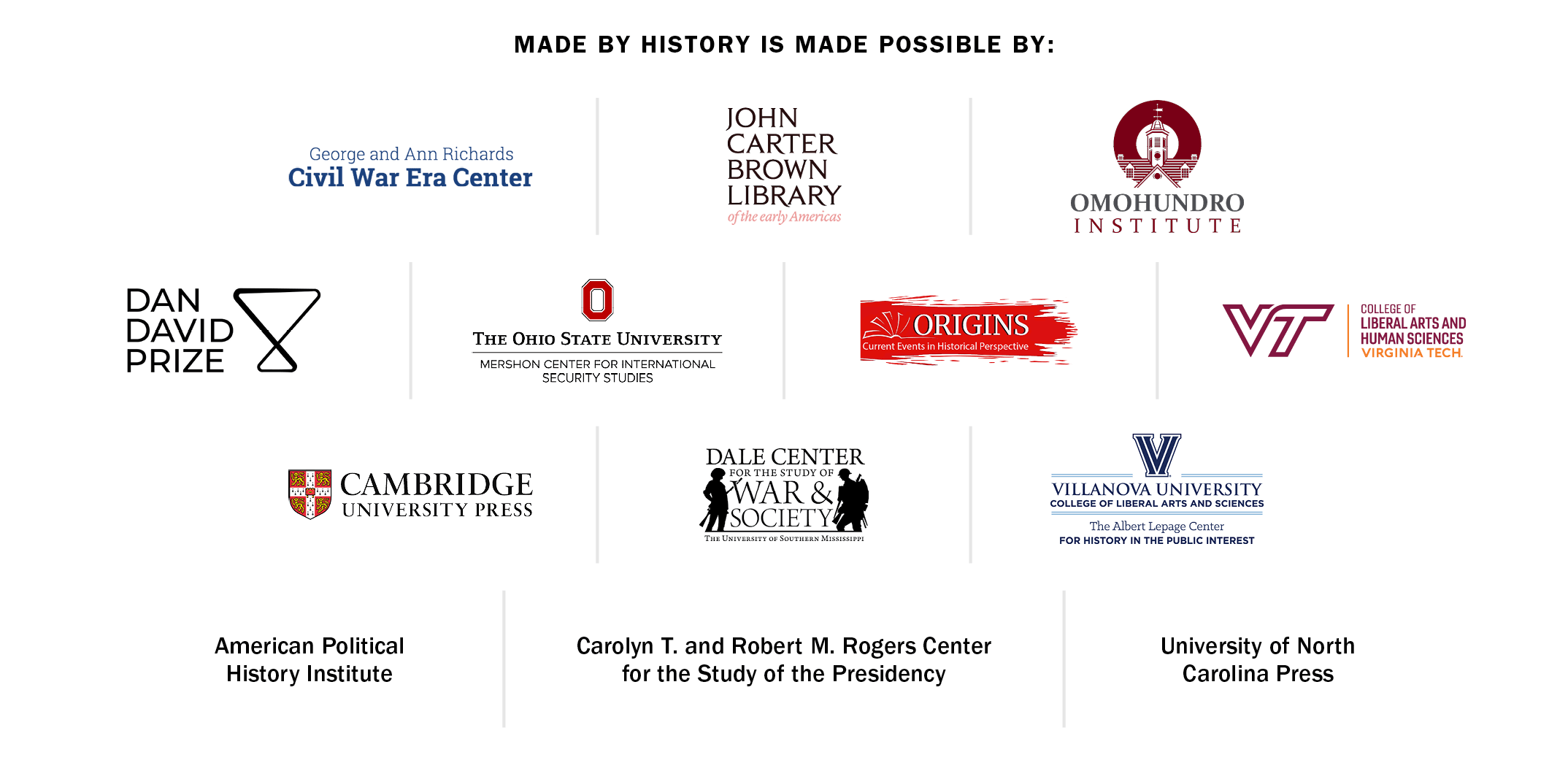
Meanwhile, country’s few outspokenly liberal performers like Maren Morris, Jason Isbell, and the Chicks remind listeners that not every artist in the genre supports the rightward drift of the music’s culture. But it’s an uphill battle for those musicians. The country industry’s support for the military too often reads as inherently conservative in the current political landscape where Aldean sells shirts that insist “Military Lives Matter” and Greenwood sells “God Bless the U.S.A.” Bibles with the endorsement of Donald Trump.
It’s tempting to see the CMA Fest’s “Enlisted” program with Morgan and Sinise as another part of country music’s conservative Republican identity. Yet doing so would neglect the deeper roots of the CMA’s affiliation with the U.S. Armed Forces. The CMA’s inclusion of a military-themed event is a part of a long effort to brand country music as “America’s music.” It’s a campaign that has yielded not just the political power that comes with currying favor with presidents but record-setting profits for generations.
Joseph M. Thompson is assistant professor of history at Mississippi State University. His first book, Cold War Country: How Nashville’s Music Row and the Pentagon Created the Sound of American Patriotism (The University of North Carolina Press, 2024), traces the economic, political, and cultural connections between the country music business and the U.S. military since World War II.
Made by History takes readers beyond the headlines with articles written and edited by professional historians. Learn more about Made by History at TIME here. Opinions expressed do not necessarily reflect the views of TIME editors.
